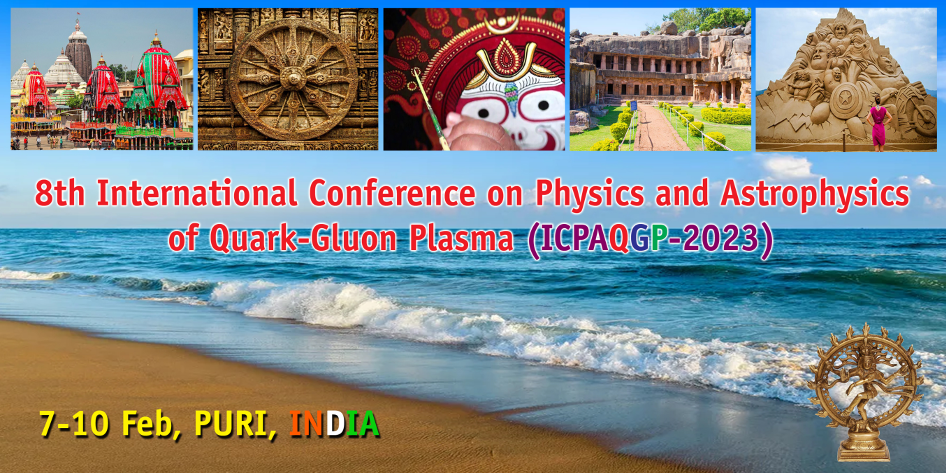Heavy quarks placed within a hot deconfined medium undergo Brownian motion. At low momenta, the diffusion in momentum space is characterized by a transport coefficient $\kappa$, which needs to be calculated nonperturbatively for a strongly interacting plasma. We have calculated $\kappa$ for the charm and bottom quarks in a gluonic plasma, using lattice gauge theory and an expansion in the...
The high-energy collisions can be viewed as collision of two colored glasses using the Color-Glass condensate (CGC) picture. It results in the production of the strong coherent gluon fields known as Glasma. The colored electric and magnetic fields evolve by the means of Classical Yang-Mills (CYM) equations. The lifetime of this pre-equilibrium stage is of the order of formation and...
During the early stages of the heavy-ion collision experiments, the heavy quarks (charm and bottom) are created via hard scattering. Due to their large mass, they do not thermalize with the constituents of the quark-gluon plasma (QGP) over the lifetime of the plasma. Hence, they witness the entire evolution of QGP and are effective probes to study the strongly interacting matter. We study the...
Bound states of the heavy quark and its anti-quark are the hard probes that provide crucial information about the conditions formed in the thermal medium. It was shown that these bound states, particularly bottommonium, dissociate in the QGP medium due to the color screening of the real potential and scattering with the thermal constituents known as Landau damping, also responsible for...
Several heavy-ion collision experiments at RHIC and LHC have been performed in identifying quark-gluon plasma (QGP) matter. In recent times, non-central heavy-ion collisions are of more interests where very strong magnetic field is produced in the direction perpendicular to the reaction plane. Many theoretical efforts have been made to study the modification of the strongly interacting matter...
The decay rates of the $X Y Z$ exotics discovered in the heavy quarkonium sector are crucial observables for identifying the nature of these states. Based on the framework of nonrelativistic effective field theory, we calculate the rates of semi-inclusive decays of heavy quarkonium hybrids into standard heavy quarkonia. We compute the contributions to the decay rates at leading and subleading...
There have been different proposals for signatures of the formation of a deconfined thermal medium(quark-gluon plasma) in heavy-ion collisions. The suppression of $J/\Psi$ in the deconfined medium is one of the cleanest signals among many other signatures like elliptic flow, jet quenching etc. for the formation of the deconfined medium. However, there are very few signals effective for the...

